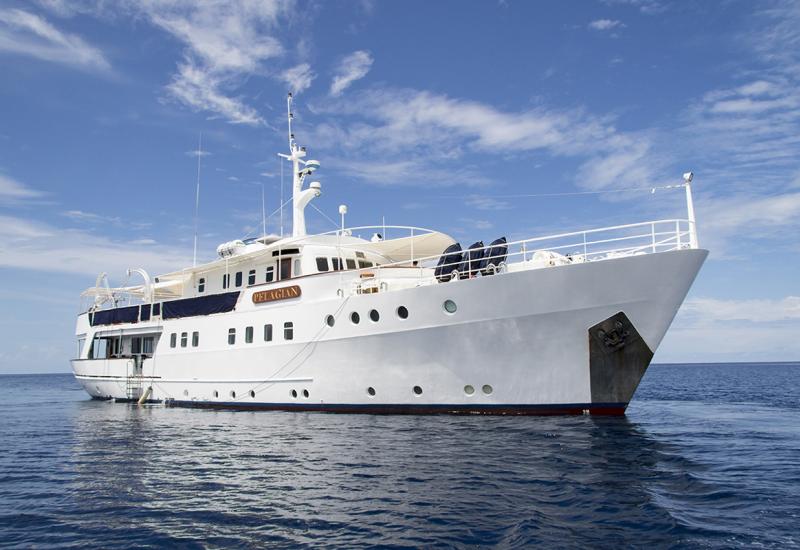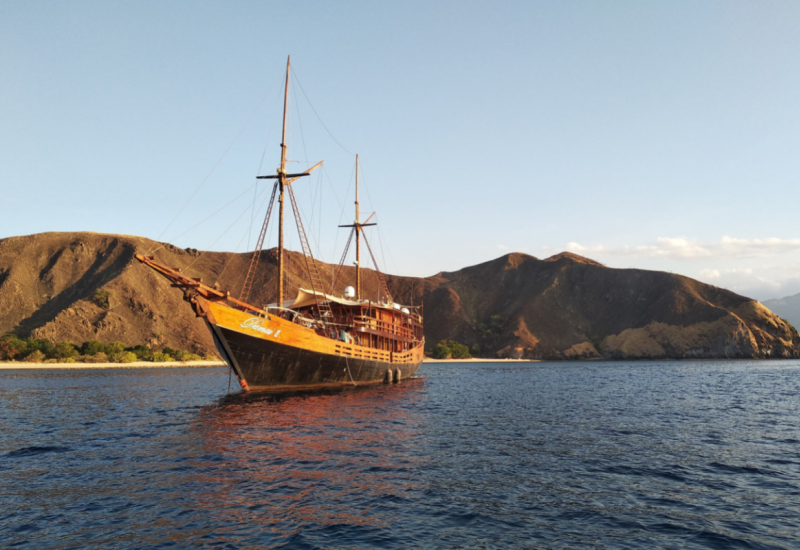A Newly Discovered Wreck is Likely A WWII Submarine. Here’s What Happens Next.
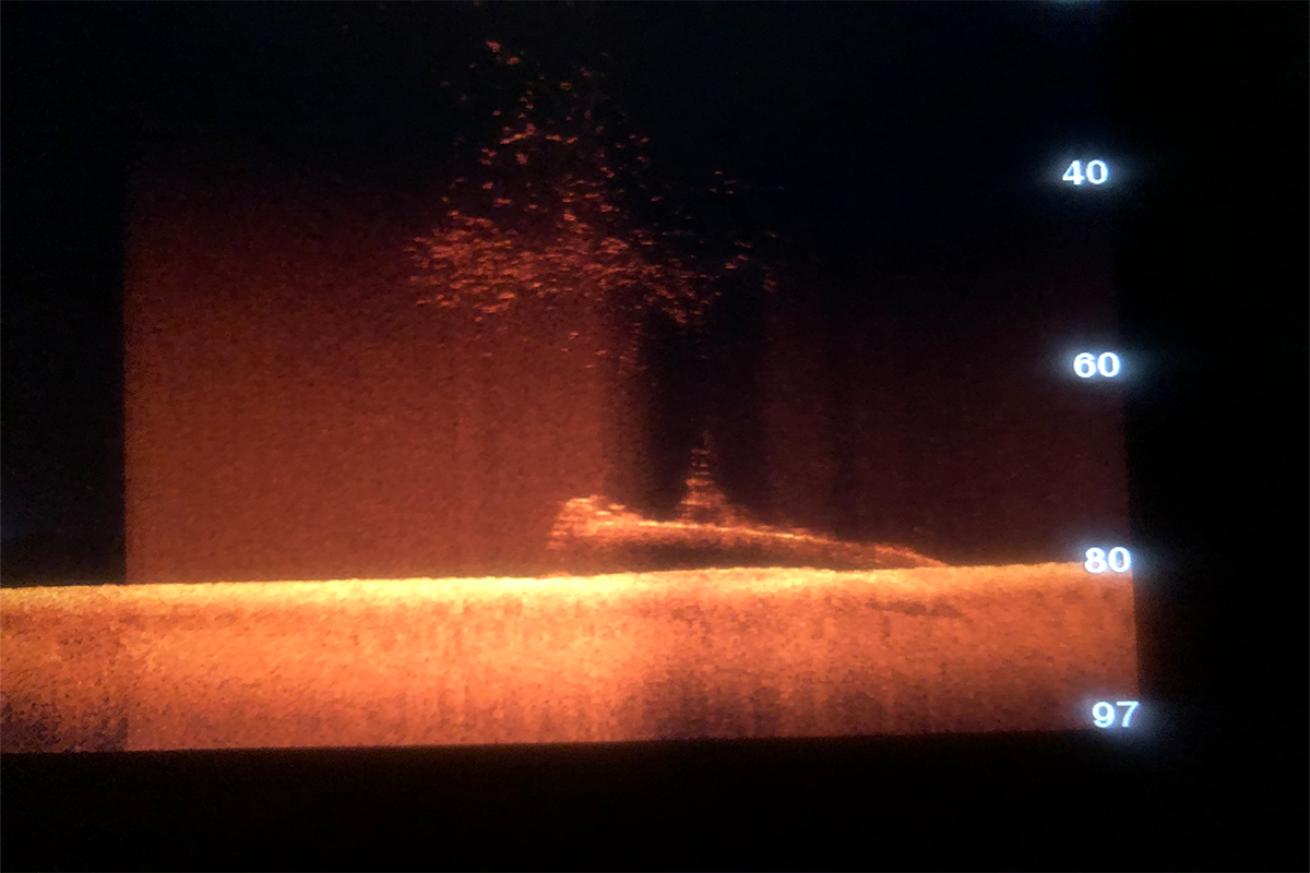
Courtesy Jean Luc RivoireA DownScan of the USS Grenadier.
A newly discovered wreck in the Strait of Malacca, resting about 90 miles off of Phuket, Thailand, is likely a WWII submarine.
Believed to be the USS Grenadier, scuttled by its crew in 1943 after a Japanese bombing, the wreck was discovered last fall by a team of four divers, Jean Luc Rivoire, Benoit Laborie, Lance Horowitz and Ben Reymenant.
“It gives you goosebumps,” Horowitz said. “It's a fairly desolate seabed, except for this amazing artificial reef” full of marine life.
Experienced divers (Reymenant assisted in the 2018 Thailand rescue of the boys soccer team trapped in a cave), the team spent months triangulating a likely location from historic records, interviews with fishermen, and sonar.
They came straight down on the conning tower during their first dive. Over six dives between October 2019 and March 2020, the $110,000 operation surveyed the wreck. They used DPVs to traverse the more than 300-foot structure, collecting measurements, photos and videos. The submarine’s dimensions match Grenadier’s schematics, and Horowitz says the wreck’s intact hull and open hatches align with survivor accounts.
Dr. Robert Neyland, head of the Underwater Archaeology branch of the Naval History and Heritage Command, cannot confirm the wreck’s identity as of yet, but indicates it is likely the Grenadier.
WWII submarines lacked identifying hull numbers or name plates for intelligence protection, but are rarely misidentified given how well their metal structure withstands oceanic conditions, he says. “It’s a lot easier to identify an iron shipwreck sitting proud at the bottom versus something that is fragmented wooden remains.”
It was Grenadier’s own men who sent it to the bottom of the ocean, according to accounts of sailors given after the end of the war.
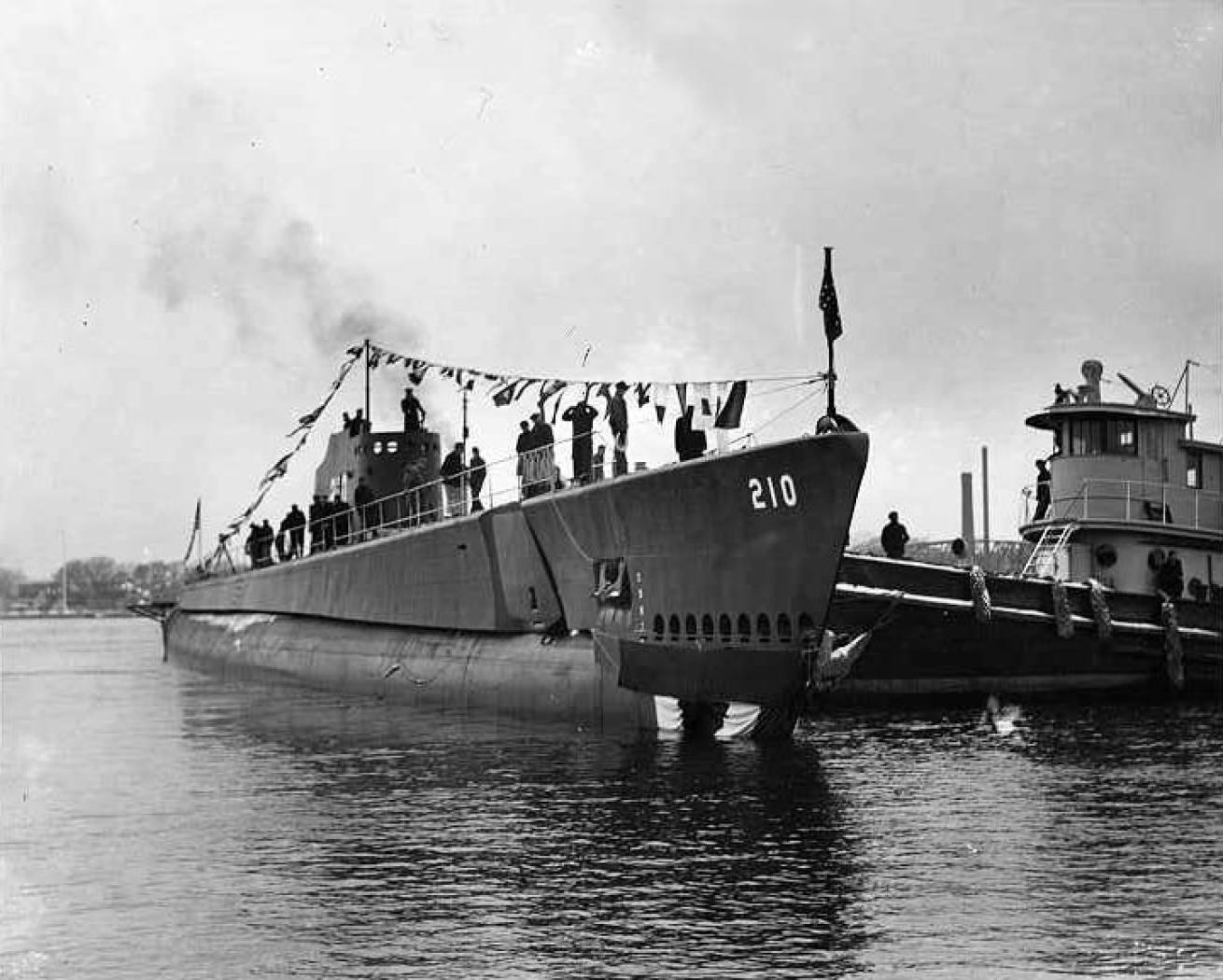
National ArchivesOne of 52 U.S. Navy submarines to disappear in WWII, the Grenadier's crew scuttled the vessel to keep it from the Japanese.
On April 20, 1943, the submarine set off on the surface after two enemy ships. The next morning, a Japanese plane spotted the vessel. As the crew tried to dive, aircraft targeted the disappearing sub. Unable to descend quickly enough, bombs shook the plane, Robert W. Palmer, a Grenadier sailor, wrote in The Silent Service in WWII.
Damaged, it nonetheless continued its descent. A fire tore through the submarine’s maneuvering room, and the lights went out. More than 270 feet down, the crew attempted repairs in sweltering conditions to no avail. The sub surfaced in the middle of the night with no propulsion.
After dawn, a plane descended toward the vessel. The crew “blazed away with machine guns,” according to Navy records, hitting the plane on its second pass. Careening, the plane’s torpedo exploded 200 yards from the boat.
As Japanese boats approached from the north and south, Palmer wrote the crew prepared to scuttle the boat. Grenadier’s crew emptied a Tommy gun into a torpedo data computer, smashed radio gear, threw documents off the boat with weighted bags, and pummeled their coding machines with hammers. Finally, the crew opened all of the submarine’s vents and jumped into the ocean.
Sinking 270 feet, Grenadier became one of 52 submarines to disappear during the war.
All 76 sailors were plucked from the ocean, becoming prisoners of war. First taken to a commandeered Catholic school in Malaysia, the men were forced to stand or sit at attention. Those who did not comply faced physical abuse from their Japanese captors, maltreatment that intensified over the two years of starvation and torture.
“Beating, burning, breaking fingers with bamboo or pencils between them were perpetrated on the men by Japanese soldiers who sneered and joked,” Palmer wrote. The Japanese repeatedly pushed the blade of a pen knife under captives' fingernails to pressure them for information about the submarine, he writes.
Four sailors died before the end of the war, with 72 surviving to make it back home. Grenadier’s Lt. Cdr. Fitzgerald received the Navy cross after the war for his “extraordinary heroism” in handling the bombing, scuttling and caring for his men in prison for the remainder of the war.
For the survivors’ families, the discovery provides a decades-delayed closure.
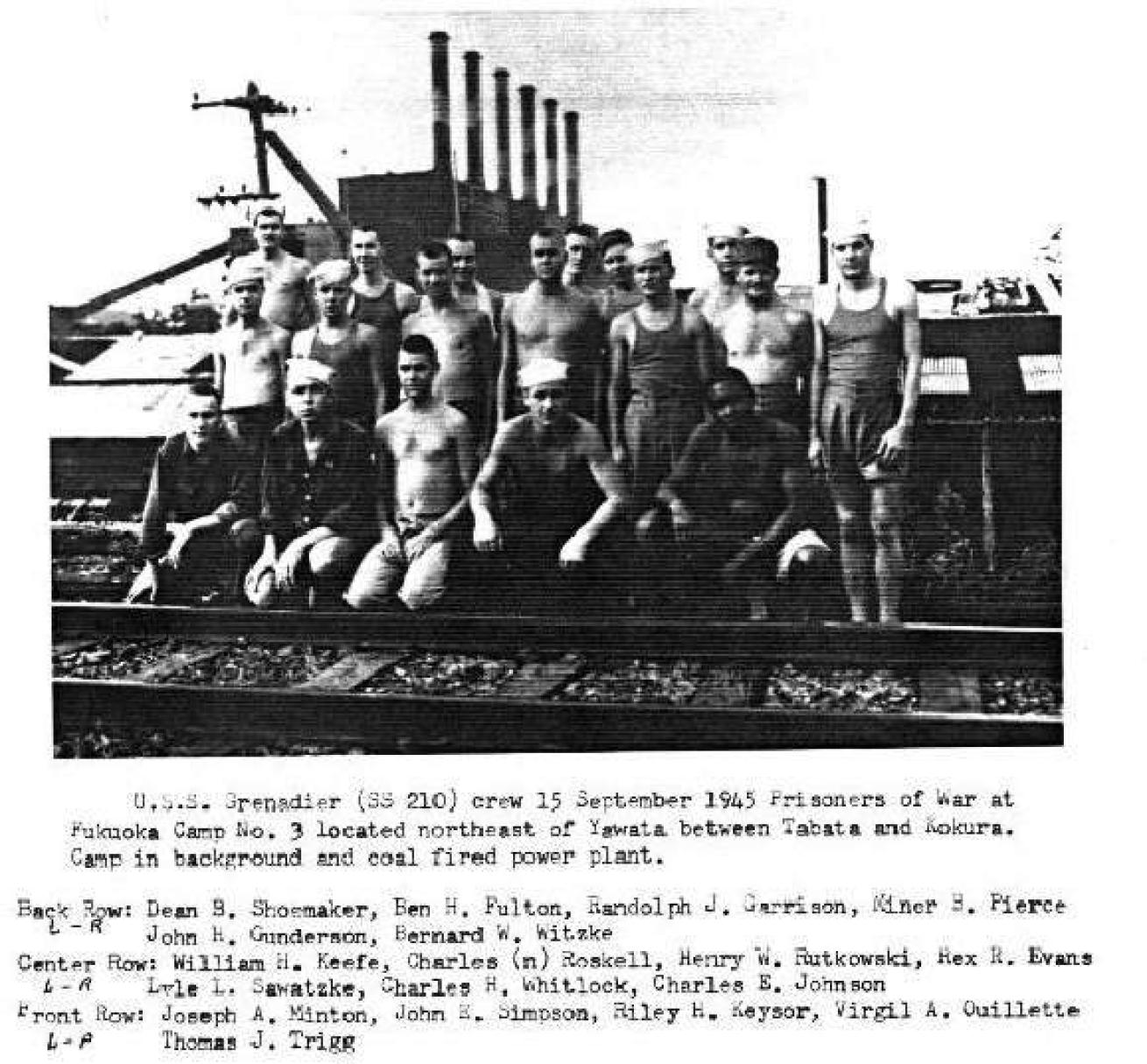
National ArchivesAfter scuttling the Grenadier, the crew became prisoners of war. Four of the 76 sailors died as POWs.
“As soon as the story broke, we were actually contacted by family members of the survivors,” says Horowitz, who extended their thanks. “It was such an important vessel and event and piece of history for their family… it was [nice] for them to actually know where and exactly how she ended up.”
If positively identified as the Grenadier, the wreck resting in Thailand’s waters will be property of the U.S. Navy and will be co-managed.
“We would probably encourage [the government of Thailand] to try to monitor the site to the extent they might be able to,” says Neyland, “and to prevent any kind of illegal activities occurring on it,” such as looting it for valuable scrap metal, a recurring issue across the region.
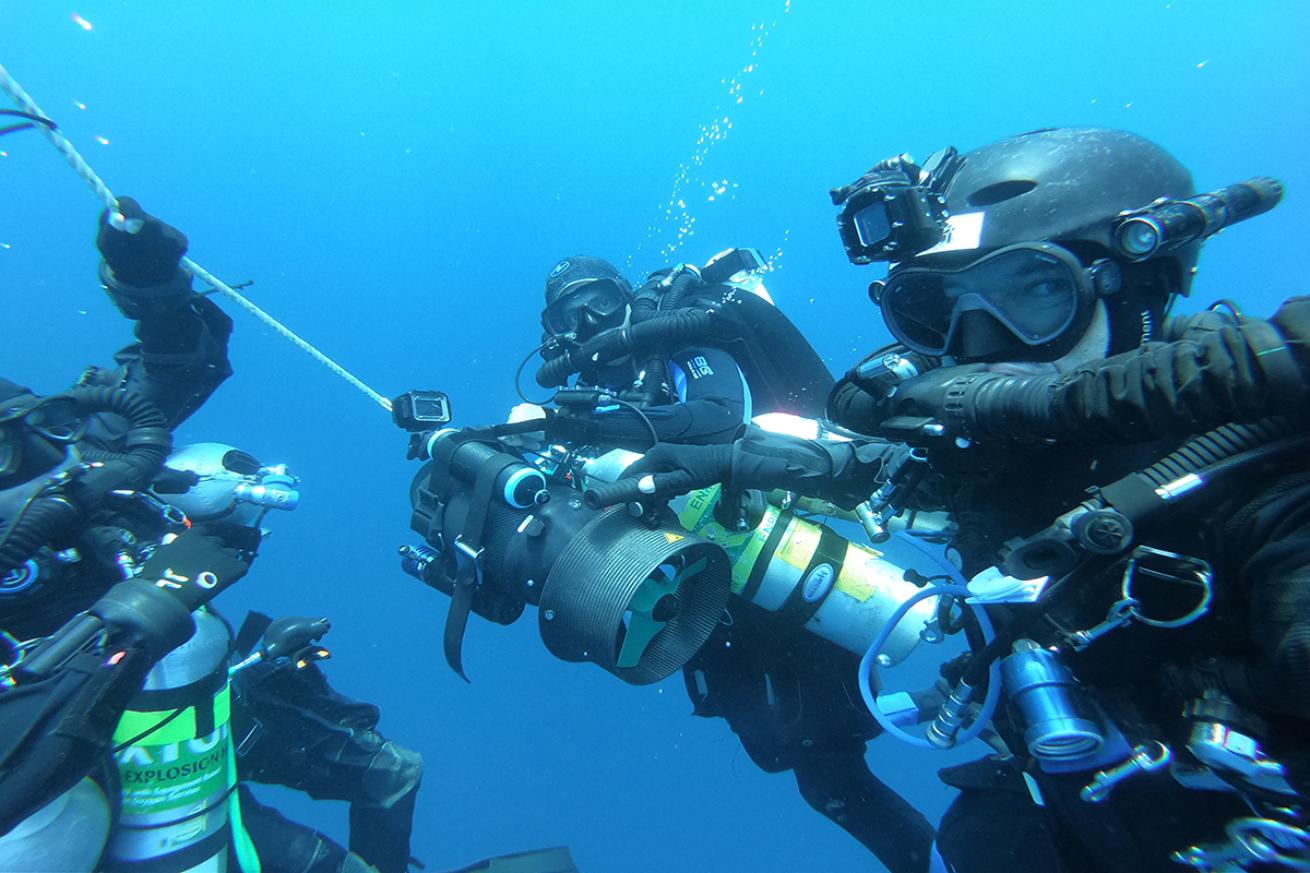
Courtesy Jean Luc RivoireThe successful wreck hunters plan to keep exploring the Malacca Straits for additional WWII submarines.
Neyland anticipates the submarine will remain where it sank, and will eventually be open for recreational diving.
Horowitz and the other divers are currently separated due to COVID restrictions but plan to resume wreck-hunting when able to move more freely. Their next targets are the HMS Stonehenge and HMS Porpoise, two British WWII submarines still waiting silently amid the turbulent tides of the Malacca Strait.
Related

